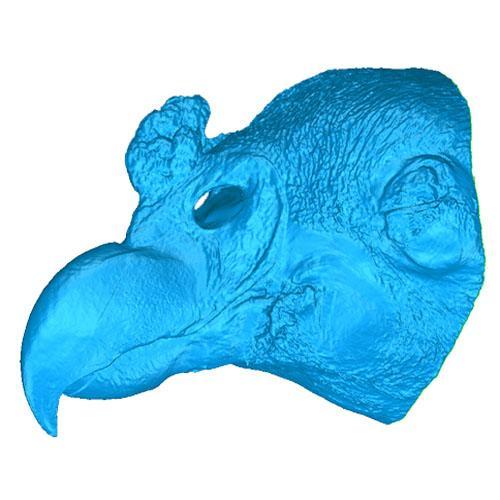Latest News and Updates from Audubon in California
California Condor. Photo: Scott Frier/USFWS

A team of researchers in England is seeking volunteers to help them understand the evolution of bird bills. The team is from the University of Sheffield's Department of Animal and Plant Sciences and they are scanning 10,000 bird bills. Once completed, this will be the largest study of bird bills ever undertaken.
How can you help? The 3D scans are incredibly detailed but before the team can use them they require a process called landmarking. Landmarking involves placing points on features of the bill that are common to all specimens. The team will use the landmarks to mathematically describe the shape of bills so that they can compare and test how they differ among species. Visit their website at www.markmybird.org to sign-up and start landmarking.
Terrrific video by San Diego Public Television takes a close look at a terrific push from San Diego Audubon to expand wetlands in the north end of Mission Bay. The project would have tremendous benefits not just to birds and wildlife, but for San Diegans, as well.
A few of our favorite ornithologists are having a laugh at the expense of lawyers representing the Southern California building industry trying to delist the Southwest Willow Flycatcher. Not only is their petition totally reliant on bad science, but they seem to think there's something called a "coastal Southwest Willow Flycatcher." There isn't. Obviously, they just cut-and-pasted from the Coastal California Gnatcatcher petition, which is also going to fail.

The U.S. Fish & Wildlife Service today announced that the Tricolored Blackbird is one of several species that it will formally consider for protection under the Endangered Species Act. Surveys last year indicate that the number of nearly-endemic species have dropped as much as 44 percent since 2011. The announcement from the Service begins a 60-day comment period, which will be followed by more in-depth consideration of the petition.
The Center for Biological Diversity filed the petition to list the Tricolored Blackbird in February.
The decision to move the federal listing process forward tracks with a similar move at the state level. In June, the California Fish and Game Commission voted against advancing a petition to list the Tricolored Blackbird under the California Endangered Species Act. That petition was also filed by the Center for Biological Diversity, and Audubon California supported it in writing, through public testimony, and through its network of supporters.
Following the Fish and Game Commission decision, both the Center for Biological Diversity and Audubon California called for reconsideration, due to a number of issues with the process through which the body made its decision. The Center for Biological Diversity subsequently refiled its petition.
For the last several years, Audubon California has worked aggressively to protect Tricolored Blackbird nesting colonies in the Central Valley. In January, at the urging of Audubon California and other partners, the Natural Resources Conservation Service issued a $1.1 million grant to support a partnership including Audubon California, the dairy industry, and federal agencies to support Tricolored Blackbird conservation.

The Black Oystercatcher is one of our favorite shoreline birds, with its black body and bright orange beak. The bird has long been a focus for conservation, and its recent designation as climate endangered in Audubon research has heightened concern. But as a recent Bay Nature article shows, the story of the Black Oystercatcher isn't as gloomy as one might think. We're learning a great deal about the bird, thanks to a massive effort from volunteers up and down the coast, and what we're learning gives us hope.
As Audubon California Marine Program Director Anna Weinstein says in the article, "“They have a chance. These birds are tough, they’re survivors that chase away predators such as ravens and red-tailed hawks, and I have a sense that they will prevail and adapt to climate change. They are a bird for today’s world.”
Our newsletter is fun way to get our latest stories and important conservation updates from across the state.
Help secure the future for birds at risk from climate change, habitat loss and other threats. Your support will power our science, education, advocacy and on-the-ground conservation efforts.
Join the thousands of Californians that support the proposed Chuckwalla National Monument.